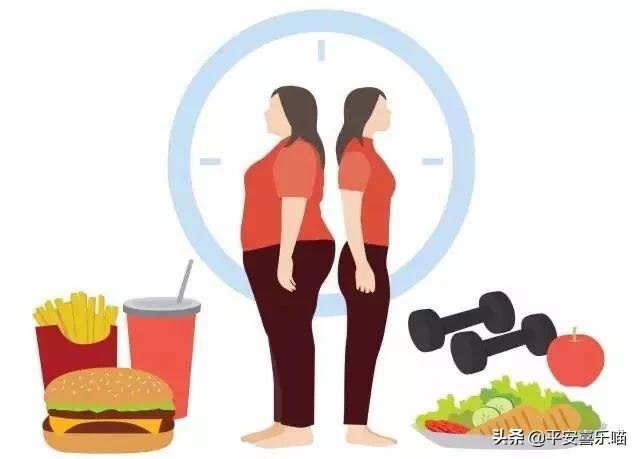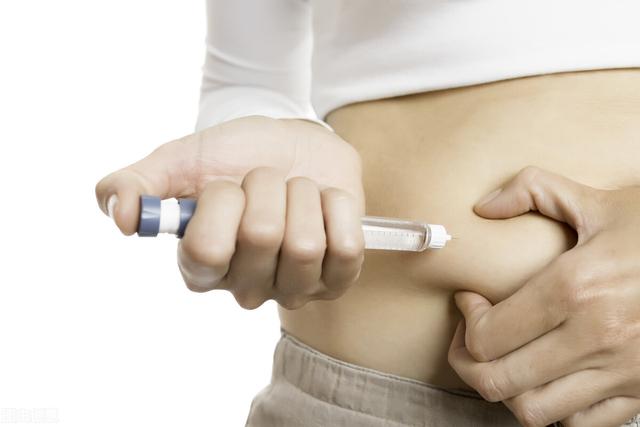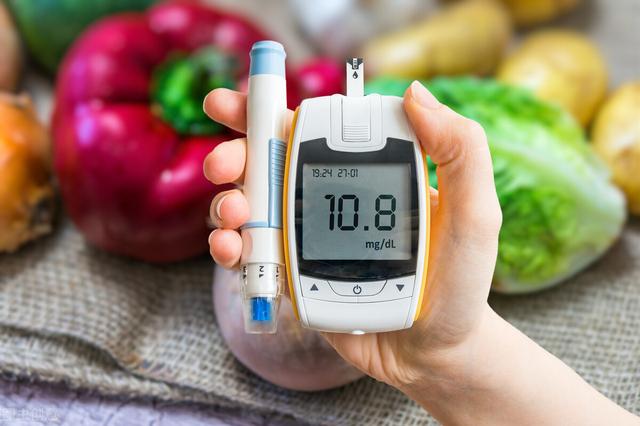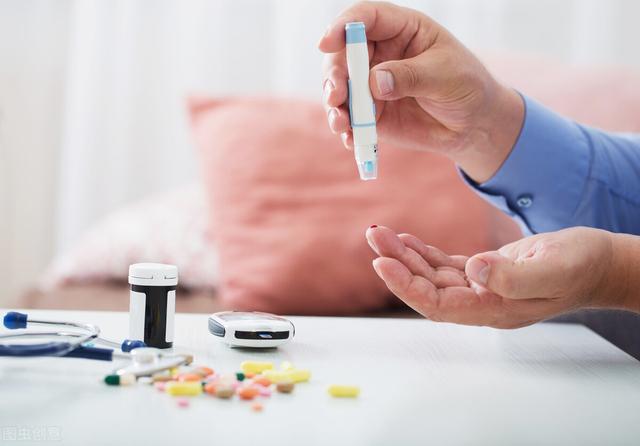How does diabetes develop? How do you go about regulating it?
How does diabetes develop? How do you go about regulating it?
Hello, diabetes mellitus is a group of disorders of carbohydrate, protein, and fat metabolism caused by absolute or relative insufficiency of insulin secretion or impaired utilization of insulin, with elevated blood glucose as the main hallmark.
The pathogenesis of type 1 diabetes mellitus is primarily due to the destruction of pancreatic β-cells, resulting in an absolute lack or significant reduction of insulin.
Type 2 diabetes typically begins with insulin resistance and slowly develops progressive insulin underproduction.
The development of diabetes is closely related to personal habits and family genetic history.
Individual habits, especially with the diet is more closely related, some people like spicy, sweet, fat and greasy products, and often do not exercise, damage to the spleen and stomach function, obesity for a long time, and finally the blood lipids, glucose and so on will be elevated.
People with a family history of diabetes are more likely to get it, but it's not a disease as long as you live your life in a way that prevents it.
That's why it's so important to prevent diabetes before you get it, and as a high-risk group it's even more important to make changes the sooner you have a healthy lifestyle and keep your weight within the ideal range.
Once the disease develops, the earlier the patient receives comprehensive treatment, including Chinese medicine, the better it will be for preventing and treating diabetes and its complications. Normally, in addition to controlling blood sugar with medication, you must condition your body through continuous learning about diabetes, dietary control, and exercise.
Hello, I'm Ping An Joy Meow, a clinical practitioner, specializing in medical knowledge popularization, let me briefly answer the questions you raised: how is diabetes formed? How do I manage it?
Diabetes is a common and frequent disease. The prevalence of diabetes is increasing rapidly due to factors such as the increasing standard of living of the population, changes in lifestyle and population ageing. According to WHO estimates, there are currently more than 150 million people with diabetes worldwide, and by 2025 this number will double. Therefore, diabetes is already a worldwide public health problem that seriously threatens human health.

So, how does diabetes develop?
Diabetes is categorized as a metabolic, nutritional disease. Diabetes mellitus is not a single disease, but a syndrome caused by a combination of etiologic factors, including genetic and environmental factors. The etiology and pathogenesis of diabetes are very complex, both type 1 and type 2 diabetes are caused by genetic and environmental factors involved in its pathogenesis.
- Genetic factors are involved in the development of the disease by the genes responsible for its onset, so genetically, diabetes can be passed from parent to offspring.
- Environmental factors are not new to us and include: an aging population, over-nutrition, under-activity, obesity and poor lifestyle.
So the second question: how do we go about conditioning? That is to say, what should we pay attention to in general?
As type 1 diabetes is autoimmune related while type 2 diabetes is lifestyle related. So we can reduce the incidence of type 2 diabetes by making lifestyle changes.

Specifically, there are several aspects:
- Live a regular life, quit smoking and strong alcohol, pay attention to personal hygiene and prevent all kinds of infections.
- For those who are obese or overweight, lose weight. Ideal weight (kg) = height (cm) - 105
- Eat plenty of green leafy vegetables, beans, coarse grains, and fruits that are low in sugar content.
- Three meal system: total calories 1/5, 2/5, 2/5 for breakfast, lunch and dinner respectively
- Strengthen physical exercise, in addition to control the mouth but also open legs ah.
The general idea is to eat sensibly, exercise regularly and prevent obesity.

Well, these are my answers to this question, and I don't know if you've gotten anything out of it.
Click to follow me if you think my answer is still good.
Diabetes is known as the "immortal cancer", especially the most serious complications, so that diabetics suffer double the pain. So how is diabetes formed? How to regulate?

How does diabetes develop?
For the causes of diabetes, there are many other reasons besides genetic factors.
Type I diabetes
Predominantly childhood diabetes. Mostly due to the pancreatic beta cells that produce insulin are injured by autoimmune attacks. The decrease in insulin secretion is caused by this disease are related to genetic factors, and must rely on exogenous insulin to regulate, so type I diabetes is also called insulin-dependent diabetes mellitus.
Type II diabetes
Caused by the relative insufficiency of insulin secretion, most of them arise in the middle and old age, and can be regulated by diet control, medication, and appropriate physical exercise, and do not necessarily require insulin injections, so type II diabetes mellitus is also called non-insulin-dependent diabetes mellitus.

How do you go about managing diabetes?
1. Be confident
For diabetic patients, we suggest that patients can learn more about diabetes conditioning and conditioning information, so that they can understand that diabetes is not scary, it can be conditioned, and it is very important to enhance the confidence to overcome diabetes. For example, walking, brisk walking, aerobics, dancing, playing tai chi, running, swimming, etc., which can improve the body's sensitivity to insulin.

2. Exercise therapy
The form of exercise for diabetic patients can choose walking, jogging, dancing, playing soccer, jumping rope, swimming and so on. However, at the beginning, it is necessary to pay attention to the exercise intensity of 50% to 60% of the maximum heart rate, the exercise time is gradually extended from 20 minutes, and the exercise is performed 3 to 4 times a week. After adhering to a period of time, with the improvement of exercise capacity, you can gradually increase the time and frequency of exercise. But do not overwork, so as not to aggravate the condition.
In addition, it is to avoid hypoglycemia during exercise, so it is best to exercise within 1 to 3 hours after a meal, reduce insulin or oral hypoglycemic drugs before exercise, and pay attention to sugar supplementation during exercise.

3. Dietary therapy
The purpose of diet therapy is to control the intake of calories in order to reduce the burden on the pancreatic islets and control the rise in blood sugar. Therefore, it is important to follow a few points in diet therapy:
①Carbohydrates should be controlled reasonably. Moderate amount of sugar is favorable to improve insulin sensitivity and glucose tolerance, so sugar can account for 50% to 60% of the total calories, i.e., the amount of food intake is 200-350g/㎏-d is appropriate. For patients using insulin and oral hypoglycemic drugs can be appropriately relaxed;; and
② Protein intake should be close to normal. Can account for 15% to 20% of the total calories, with meat, eggs, beans, milk and other high-quality protein-based;
③ Reduce fat intake. Fat intake can account for 25% to 30% of total calories, of which cholesterol intake should be less than 300mg/㎏-d.
④ Intake of appropriate amounts of inorganic salts and vitamins.
⑤ Eat meals on time and in quantities, eliminate snacks, and live a regular lifestyle.
Conclusion: Through timely and reasonable diet, exercise and other interventions for pre-diabetics, some patients can delay or avoid the onset of diabetes, I hope the above will help you.
With the development of social economy, the improvement of people's living standard, the change of life style and the aging of population, the incidence of diabetes mellitus has increased significantly in the world, and has become the fourth killer after cardiovascular disease, cerebrovascular disease and cancer. In 2010, research in China also showed that the prevalence of diabetes and pre-diabetes among people over 20 years of age in China has reached 9.7% and 15.5% respectively. Therefore, diabetes has become a serious public health problem in the world and in China.

How does diabetes develop?
Diabetes mellitus is a syndrome of a series of metabolic disorders of sugar, protein, fat, water and electrolytes, etc., triggered by various factors such as genetics and the environment, which cause pancreatic islet hypoplasia and/or insulin insufficiency. Clinically, diabetes mellitus is mainly manifested by hyperglycemia, which can cause chronic damage, dysfunction and failure of many organs.

There are four early symptoms of diabetes, don't take them lightly
Early Symptoms of Diabetes I. Easily Hungry and Eat More
As the sugar in the body is excreted as urine sugar, so what you eat is not enough to maintain the body's calorie needs, resulting in the patient is always hungry, so eat a lot of food, but still feel hungry, usually do not eat a lot of sweets, but also become a large number of sweets, the appearance of the above early symptoms of diabetes need to be considered is not suffering from diabetes, you need to go to the hospital in a timely manner! You need to go to the hospital in time.

Early symptoms of diabetes II, hand numbness, foot cramps
Diabetic patients will often experience paralysis of the hands and feet, shaking hands and feet, inactivity and paroxysmal sensation of the fingers, severe neuroinflammatory foot pain, paralysis of the lower limbs, low back pain, don't want to walk, cramps in the calves at night, oculomotor nerve paralysis, attention and the two eyes are not the same as clear, and there are also symptoms such as dysautonomia and so on, which are the early symptoms of diabetes mellitus.
Early Symptoms of Diabetes Mellitus III, Feeling Fatigued, White Urine
Diabetic patients often feel fatigue for no reason, especially when going up and down the stairs is more obvious. Urine appears white, with a sweet and sour odor, if the above early symptoms of diabetes, must go to the hospital in a timely manner, early detection, early treatment is better to control blood sugar, and will prevent the occurrence of diabetes complications.
Early Symptoms of Diabetes IV. Eyestrain.vision降

Diabetic patients' eyes are easily fatigued, their vision decreases sharply, they cannot see things clearly, they have black eyes when they stand up, they see things blurred, their eyes suddenly become nearsighted, and they suffer from presbyopia and other symptoms. This is a clear manifestation of the visual impairment, retinal hemorrhage, cataract, and visual adjustment disorders that diabetes can cause. When this early symptom of diabetes appears, you need to check your blood sugar and visit an ophthalmologist quickly.
How do you manage diabetes?
If diagnosed with prediabetes, interventions such as diet and exercise should be actively pursued.
Specifically there:
(1) Change bad dietary habits, eat less drinks, French fries and other high-calorie foods, control the intake of oil, meat and staple foods, and eat more green vegetables.
(2) Exercise in moderation, gradually increasing the amount of activity according to the individual's ability to tolerate it.
(3) Active treatment of hypertension, hyperlipidemia, etc.
(4) Eat selenium-containing foods at the table
Selenium supplementation can protect and repair pancreatic islet cells from damage and maintain normal insulin secretion. Medical experts remind: Nutrition, repair of pancreatic islet cells, restoration of pancreatic islet function, so that it regulates its own blood sugar is the fundamental treatment of diabetes.

What everyday foods have selenium?
Exposure to all kinds of seafood, animal liver, red meat, etc., a small amount of nori, kelp, mushrooms, also, but selenium content of meat, offal, etc. to eat more than one is very easy to cause gout three high symptoms, so it is not suitable for people with high blood sugar.
So you can also choose some of our selenium-rich areas of crops, such as selenium-rich rice, selenium-rich Ziyang Mao Jian, and so on, when cooking rice eat some, or drink some Ziyang Mao Jian, are very simple, Ziyang Mao Jian selenium content is high in China's selenium-rich areas, Ankang Ziyang is one of the few landmarks of certified crops, you can go to the tour can taste!
A couple of diabetics in my family, I think with diabetes, it's a mismatch between the meals you eat and the amount of exercise you get over a long period of time. Eating a bit too much causes a weak spleen and stomach. Eating too much fine grains and too little coarse grains. Insulin may be limited and when it runs out, it's not enough. Or there is a meter in your body, and when you often eat too much and exercise too little, your meter secretly changes its standard, causing even less insulin to be secreted.
Predominantly childhood diabetes. Mostly due to injury to insulin-producing pancreatic beta cells by autoimmune attack. Insulin production is reduced, and the disease is genetically linked.
Chafing disease is caused by metabolic disorders of the pancreas, diabetes at home to regulate the method to take two acupuncture points: first of all, press the large vertebrae point 50, 2, Yongquan point from left to right press 50 do drink a glass of water. The most important thing is to insist on ✊.
Obese people are more likely to get diabetes, exercise and eat a normal diet!
Over-nutrition and little exercise
You need to exercise and eat more vegetables
No sweets and fewer starchy staples
This question and answer are from the site users, does not represent the position of the site, such as infringement, please contact the administrator to delete.